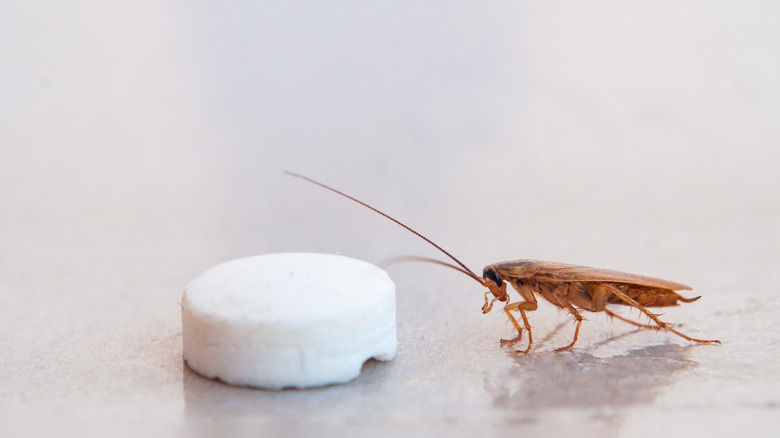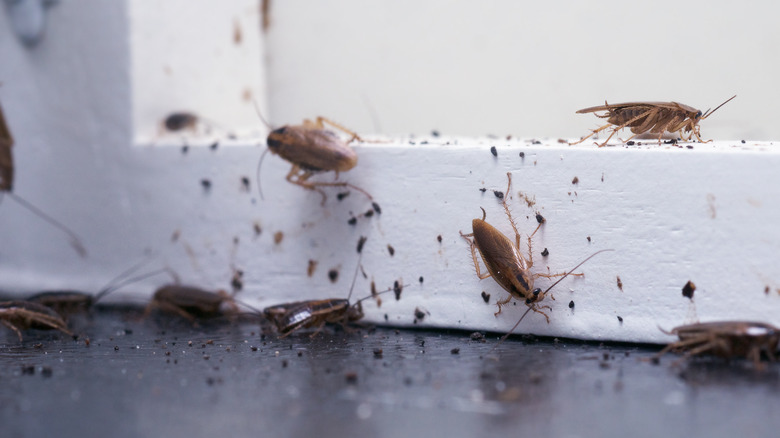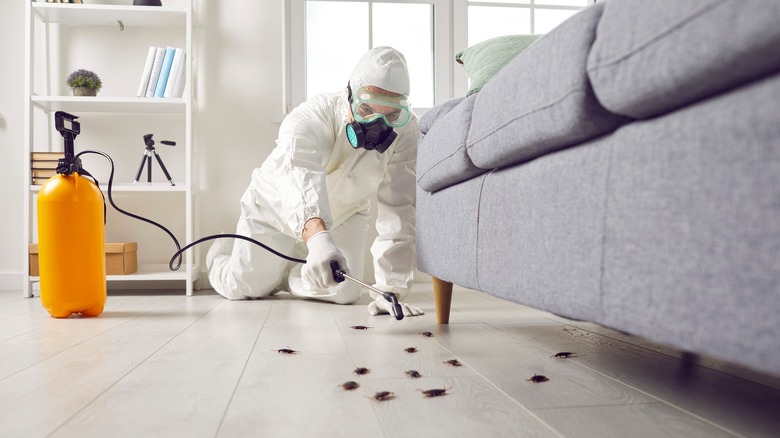The Common Mistake Most People Make When Setting Roach Traps And Bait
Setting roach traps and baits may seem straightforward but there's a common mistake many overlook: using too much bait. It's a natural assumption to think that more bait equals better results. However, this strategy often does more harm than good. Pest control companies advise that the most effective approach to using cockroach bait is the application of small amounts in multiple locations. The key to getting rid of cockroaches is not in the quantity but in the strategic placement and amount of bait used. This method mimics the natural scattering of food sources that cockroaches encounter in their environment. You increase the likelihood that cockroaches will come into contact with and eat the bait by placing small dots of gel bait in various locations, particularly those that they frequent.
Keep in mind that cockroaches are more than just pesky intruders; they possess a level of intelligence that allows them to be cautious of potential threats. These insects, typically nocturnal, have a well-developed memory and are capable of learning from their surroundings, making them particularly adept at avoiding danger. When they come across an unusually large amount of bait, their instincts might tell them something isn't right. Thus, they avoid the area, leaving your bait untouched and the problem unsolved. A thorough understanding of cockroach behavior is crucial to your baiting strategy. Recognizing their hiding spots, breeding patterns, and foraging habits can significantly enhance the effectiveness of the bait.
Understanding cockroaches: entry points and hiding spots
Before placing roach baits around the house, remember that the goal is not just to attract the roaches but to ensure that they ingest the bait. The hope is that the roaches carry the bait back to their nests, helping to eliminate the colony at its source. This will take some time and effort. These creatures are pretty resilient once they're in your home and can be notoriously difficult to eliminate. They are attracted to warm, moist environments. Areas where food and water are readily available are especially attractive. This is why you often find them in kitchens and bathrooms, lurking in the shadows, waiting for the cover of darkness to forage.
The entry points for cockroaches into your home can be surprisingly small. They can slip through cracks and crevices, drain pipes, and even hitch a ride in grocery bags or on secondhand items. Once inside, they seek out hiding spots that offer protection and easy access to food and water. Common hiding spots include beneath sinks, inside electrical appliances, within wall cracks, and under floorboards. Identifying these hiding spots is a critical step in effective bait placement. Effective bait placement hinges on targeting the areas where cockroaches are most likely to travel and congregate. The bait should be placed near potential entry points, along travel routes, and close to their hiding spots. By doing so, you increase the likelihood of cockroaches encountering and consuming the bait.
Effective use of cockroach baits and when to call professionals
Strategic placement isn't the only important component of using common items to trap cockroaches. You also need patience and persistence. As there are various baits available on the market, you might have to test a few. Some may be more effective for the particular type of cockroach infesting your home. It's crucial to choose the right one and to change it periodically. Keep in mind that cockroaches can develop bait aversion, meaning if they associate a certain type of bait with danger, they will avoid it in the future. Replace baits as directed and monitor their effectiveness. If you notice a decrease in roach activity, it's a sign the bait is working. However, continued presence or a resurgence of roaches indicates a need to adjust your strategy.
This is vital because cockroaches are not solitary creatures; a small issue can quickly escalate into a full-blown infestation. So, it helps to understand their breeding cycle to eliminate them successfully. The female cockroach can lay a lot of eggs during her lifetime. Because these eggs are in a hard case, they are resistant to most pest control methods. Also, remember that roaches carry bacteria, which, when in contact with food, can lead to health issues. If you've tried baiting and other DIY methods without success, it's time to call in the professionals. Pest control experts have access to more potent treatments and can identify and target breeding sites and hidden colonies.


